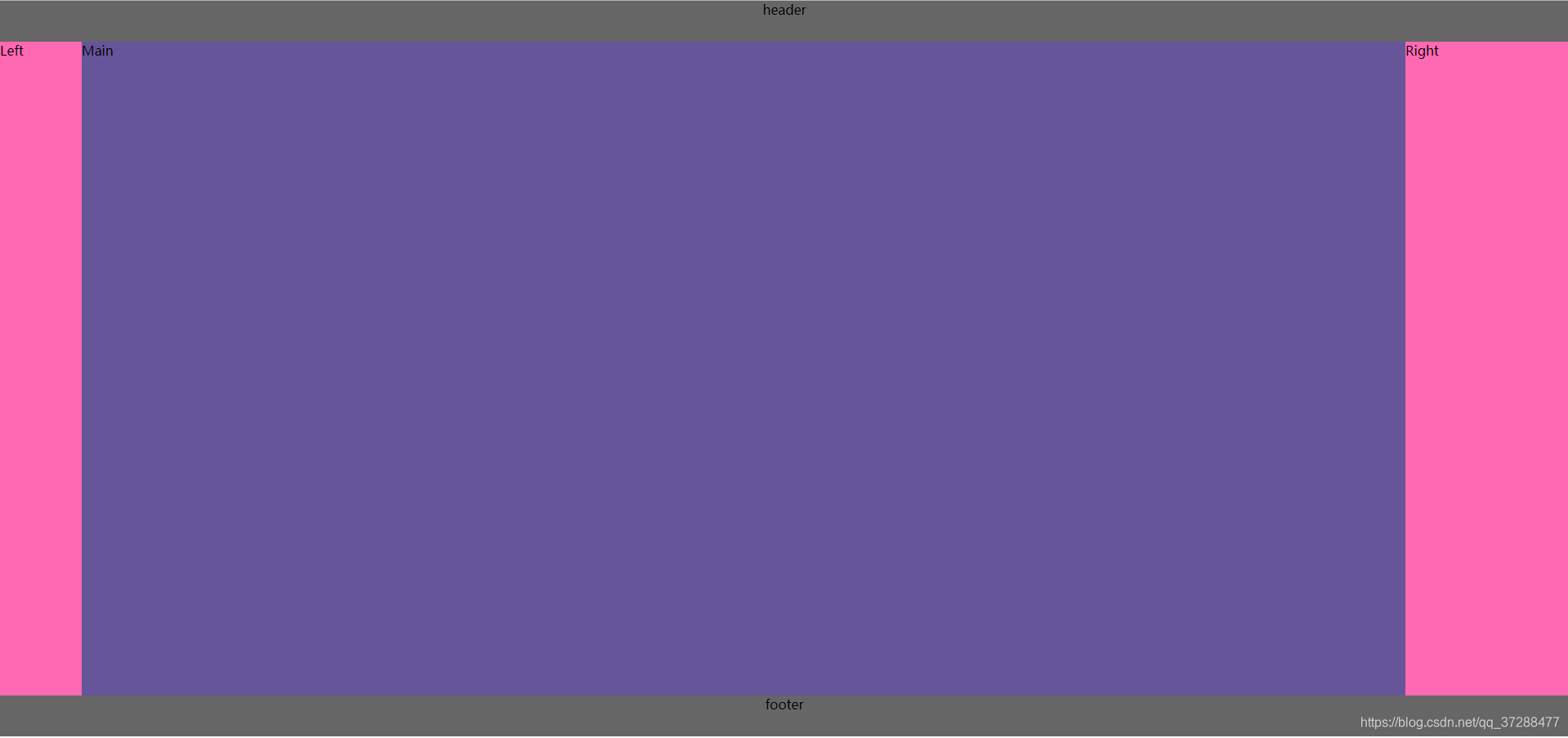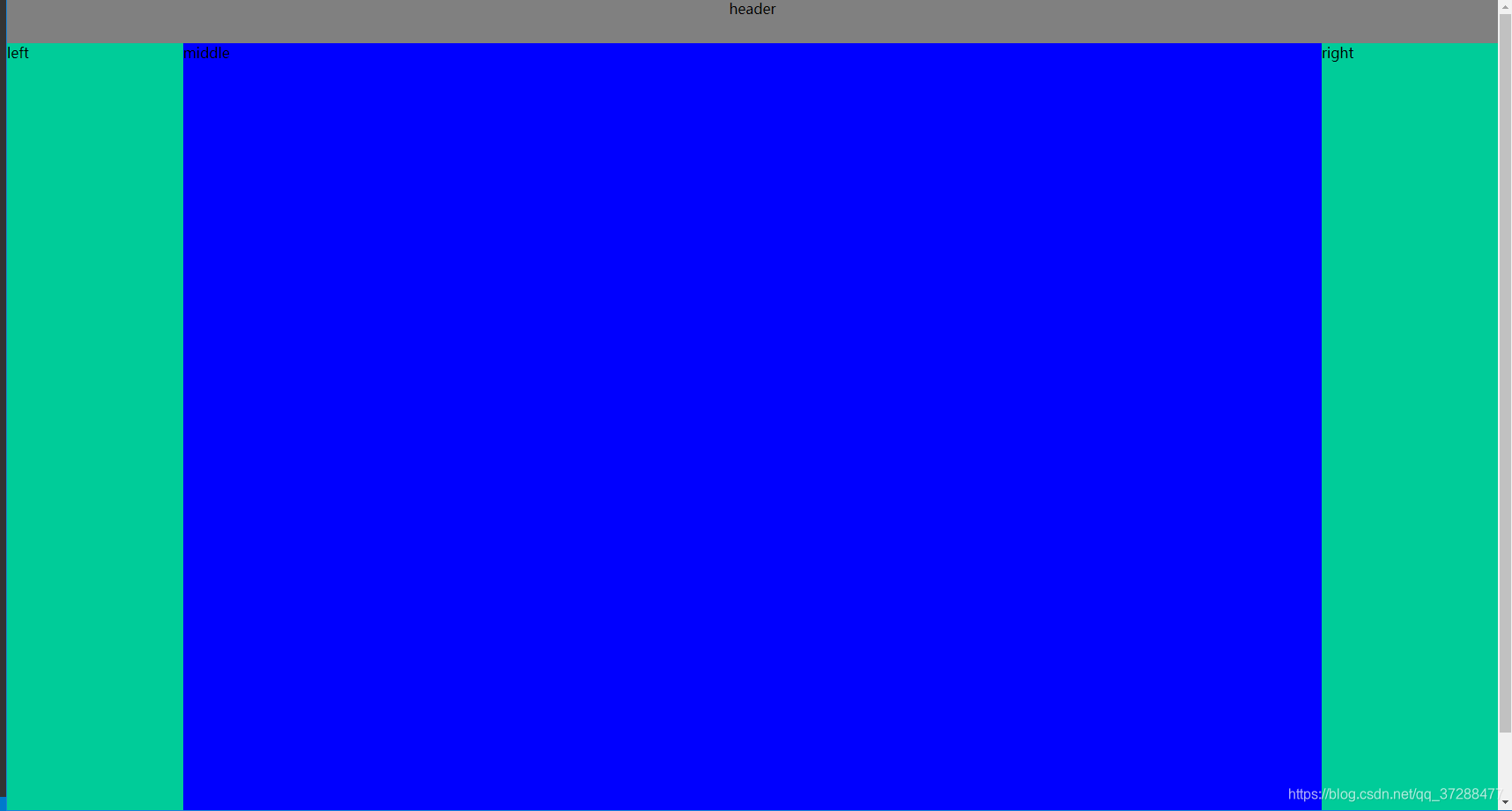涉及的范围
页面布局 CSS盒模型 DOM事件 HTTP协议 面向对象 原型链
通信 算法 安全
一面/二面
页面布局
1 假设高度已知,请写出三栏布局,其中左栏,右栏宽度各位300px,中间自适应
题目的延伸
1 每个方案的优缺点
写在代码下面
2 假设把高度去掉,考虑纵向,哪个方案不适用?
定位和表格能用
3 兼容性,真正在业务中,使用哪种?
看情况!!
浮动布局
<!DOCTYPE html>
<html lang="en">
<head>
<meta charset="UTF-8">
<meta name="viewport" content="width=device-width, initial-scale=1.0">
<meta http-equiv="X-UA-Compatible" content="ie=edge">
<title>三栏布局-float</title>
</head>
<body>
<style>
* {
padding: 0;
margin: 0;
}
.left {
width: 300px;
height: 600px;
float: left;
background: red
}
.right {
width: 300px;
height: 600px;
float: right;
background: red
}
.center {
width: 100%;
height: 600px;
background: yellow
}
</style>
<div class="left"></div>
<div class="right"></div>
<div class="center"></div>
</body>
</html>

浮动布局是有局限性的,浮动元素是脱离文档流,要做清除浮动,这个处理不好的话,会带来很多问题,比如高度塌陷等。
浮动布局的优点就是比较简单,兼容性也比较好。只要清除浮动做的好,是没有什么问题的。
延伸:你知道哪些清除浮动的方案?每种方案的有什么优缺点?
绝对定位布局
<!DOCTYPE html>
<html lang="en">
<head>
<meta charset="UTF-8">
<meta name="viewport" content="width=device-width, initial-scale=1.0">
<meta http-equiv="X-UA-Compatible" content="ie=edge">
<title>三栏布局-定位</title>
</head>
<body>
<style>
* {
padding: 0;
margin: 0
}
.parent>div {
position: absolute
}
.left {
width: 300px;
left: 0;
height: 100px;
background: red
}
.center {
left: 300px;
right: 300px;
height: 100px;
background: yellow;
}
.right {
right: 0;
width: 300px;
height: 100px;
background: red;
}
</style>
<div class="parent">
<div class="left"></div>
<div class="center">
<h2>绝对定位解决方案</h2>
1 这个三栏布局绝对定位的中间部分 1 这个三栏布局绝对定位的中间部分
</div>
<div class="right"></div>
</div>
</body>
</html>

绝对定位布局优点,很快捷,设置很方便,而且也不容易出问题,你可以很快的就能想出这种布局方式。
缺点就是,绝对定位是脱离文档流的,意味着下面的所有子元素也会脱离文档流,这就导致了这种方法的有效性和可使用性是比较差的。
flex布局
<!DOCTYPE html>
<html lang="en">
<head>
<meta charset="UTF-8">
<meta name="viewport" content="width=device-width, initial-scale=1.0">
<meta http-equiv="X-UA-Compatible" content="ie=edge">
<title>三栏布局-flex</title>
</head>
<body>
<style>
* {
padding: 0;
margin: 0;
}
.parent {
display: flex
}
.left {
width: 300px;
background: red;
}
.right {
width: 300px;
background: red;
}
.center {
flex: 1;
background: yellow
}
</style>
<div class="parent">
<div class="left"></div>
<div class="center">
<h2>三栏布局中的flex</h2>
打开的看到
</div>
<div class="right"></div>
</div>
</body>
</html>

felxbox布局是css3里新出的一个,它就是为了解决上述两种方式的不足出现的,是比较完美的一个。目前移动端的布局也都是用flexbox。
felxbox的缺点就是不能兼容IE8及以下浏览器。
表格布局
<!DOCTYPE html>
<html lang="en">
<head>
<meta charset="UTF-8">
<meta name="viewport" content="width=device-width, initial-scale=1.0">
<meta http-equiv="X-UA-Compatible" content="ie=edge">
<title>三栏布局-表格布局</title>
</head>
<body>
<style>
* {
padding: 0;
margin: 0;
}
.parent {
display: table;
width: 100%
}
.parent>div {
display: table-cell
}
.left {
width: 300px;
background: red
}
.right {
width: 300px;
background: red
}
.center {
background: yellow
}
</style>
<div class="parent">
<div class="left"></div>
<div class="center">
<h2>三栏布局中的表格</h2>
打开的看到
</div>
<div class="right"></div>
</div>
</body>
</html>

表格布局在历史上遭到很多人的摒弃,说表格布局麻烦,操作比较繁琐,其实这是一种误解,在很多场景中,表格布局还是很适用的,比如这个三栏布局,用表格布局就轻易写出来了。还有表格布局的兼容性很好,在flex布局不兼容的时候,可以尝试表格布局。
表格布局也是有缺陷的,当其中一个单元格高度超出的时候,两侧的单元格也是会跟着一起变高的,而有时候这种效果不是我们想要的
网格布局
<!DOCTYPE html>
<html lang="en">
<head>
<meta charset="UTF-8">
<meta name="viewport" content="width=device-width, initial-scale=1.0">
<meta http-equiv="X-UA-Compatible" content="ie=edge">
<title>三栏布局-网格</title>
</head>
<body>
<style>
* {
padding: 0;
margin: 0;
}
.parent {
display: grid;
width: 100%;
grid-template-rows: 100px;
grid-template-columns: 300px auto 300px;
}
.left {
background: red;
}
.center {
background: yellow;
}
.right {
background: red;
}
</style>
<div class="parent">
<div class="left"></div>
<div class="center">
<h2>三栏布局中的网格</h2>
打开的看到
</div>
<div class="right"></div>
</div>
</body>
</html>

网格布局也是新出的一种布局方式,如果你答出这种方式,也就证明了你的实力,证明你对技术热点是有追求的,也说明你有很强的学习能力。
圣杯布局和双飞翼布局
圣杯布局和双飞翼布局基本上是一致的,都是两边固定宽度,中间自适应的三栏布局,其中,中间栏放到文档流前面,保证先行渲染。解决方案大体相同,都是三栏全部float:left浮动,区别在于解决中间栏div的内容不被遮挡上,圣杯布局是中间栏在添加相对定位,并配合left和right属性,效果上表现为三栏是单独分开的(如果可以看到空隙的话),而双飞翼布局是在中间栏的div中嵌套一个div,内容写在嵌套的div里,然后对嵌套的div设置margin-left和margin-right,效果上表现为左右两栏在中间栏的上面,中间栏还是100%宽度,只不过中间栏的内容通过margin的值显示在中间。

圣杯布局
<!DOCTYPE html>
<html lang="en">
<head>
<meta charset="UTF-8">
<meta name="viewport" content="width=device-width, initial-scale=1.0">
<meta http-equiv="X-UA-Compatible" content="ie=edge">
<title>圣杯布局</title>
</head>
<style>
.container,
html,
body {
height: 800px;
padding: 0;
margin: 0;
}
.col {
float: left;
/* 三个都设置浮动,为了把left和right定位到左右部分*/
position: relative;
}
.container {
padding: 0 200px 0 100px;
}
.left {
left: -100px;
width: 100px;
height: 100%;
margin-left: -100%;
background: #ff69b4
}
.main {
width: 100%;
height: 100%;
background: #659;
}
.right {
right: -200px;
width: 200px;
height: 100%;
margin-left: -200px;
background: #ff69b4
}
.header,
.footer {
height: 50px;
background: #666;
text-align: center;
}
</style>
<body>
<div class="header">header</div>
<div class="container">
<div class="main col">Main</div>
<div class="left col">Left</div>
<div class="right col">Right</div>
</div>
<div class="footer">footer</div>
</body>
</html>

双飞翼布局
<!DOCTYPE html>
<html lang="en">
<head>
<meta charset="UTF-8">
<meta name="viewport" content="width=device-width, initial-scale=1.0">
<meta http-equiv="X-UA-Compatible" content="ie=edge">
<title>双飞翼布局</title>
</head>
<body>
<style>
* {
margin: 0;
padding: 0;
}
.header,
.footer {
height: 50px;
background: gray;
text-align: center;
}
.middle {
height: 900px;
width: 100%;
float: left;
background: blue;
}
.inset {
margin: 0 200px 0 200px;
height: 100px;
}
.left {
float: left;
margin-left: -100%;
width: 200px;
background: #0c9;
height: 900px;
}
.right {
float: left;
margin-left: -200px;
width: 200px;
background: #0c9;
height: 900px;
}
.footer {
clear: both;
}
</style>
<div class="header">header</div>
<div class="middle">
<div class="inset">middle</div>
</div>
<div class="left">left</div>
<div class="right">right</div>
<div class="footer">footer</div>
</body>
</html>

页面布局的变通
三栏布局
- 左右宽度固定,中间自适应
- 上下宽度固定,中间自适应
两栏布局
- 左宽度固定,右自适应
- 右宽度固定,左自适应
- 上宽度固定,下自适应
- 下宽度固定,上自适应








 本文深入探讨了网页设计中常见的三栏布局实现方法,包括浮动布局、绝对定位布局、flex布局、表格布局、网格布局以及圣杯布局和双飞翼布局。每种布局的优缺点及其适用场景均有详细解析。
本文深入探讨了网页设计中常见的三栏布局实现方法,包括浮动布局、绝对定位布局、flex布局、表格布局、网格布局以及圣杯布局和双飞翼布局。每种布局的优缺点及其适用场景均有详细解析。
















 2989
2989

 被折叠的 条评论
为什么被折叠?
被折叠的 条评论
为什么被折叠?








